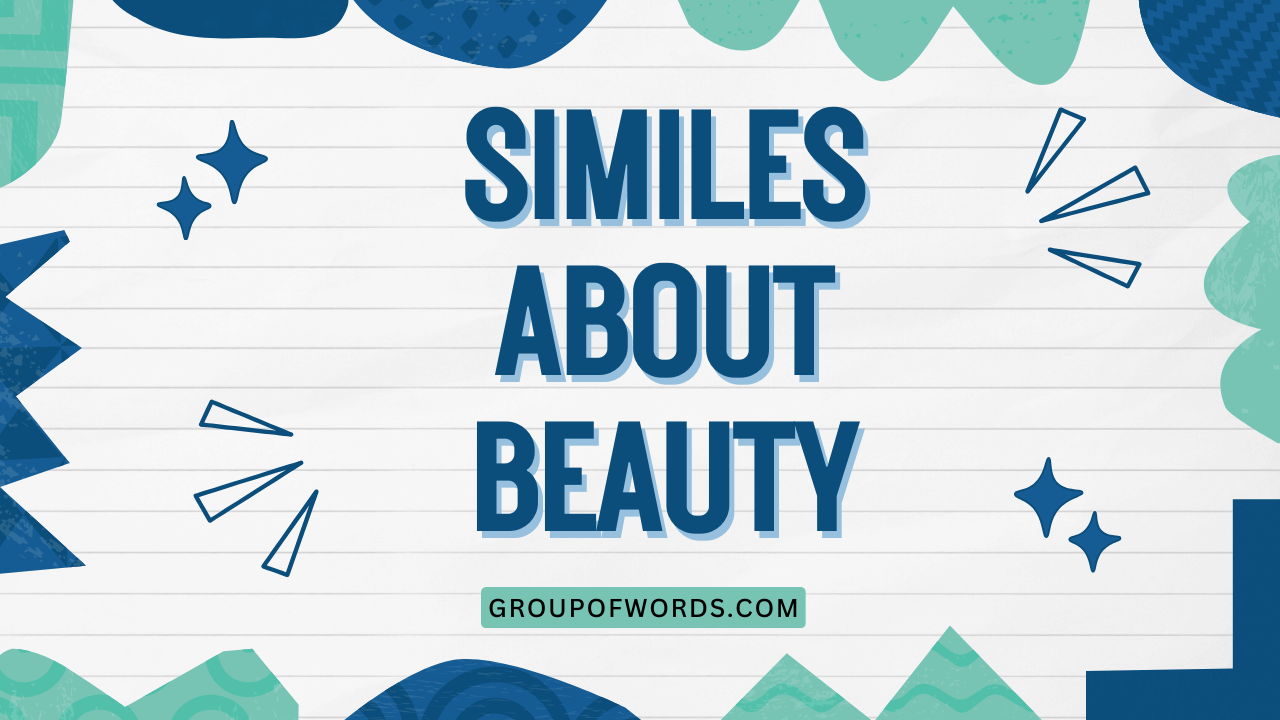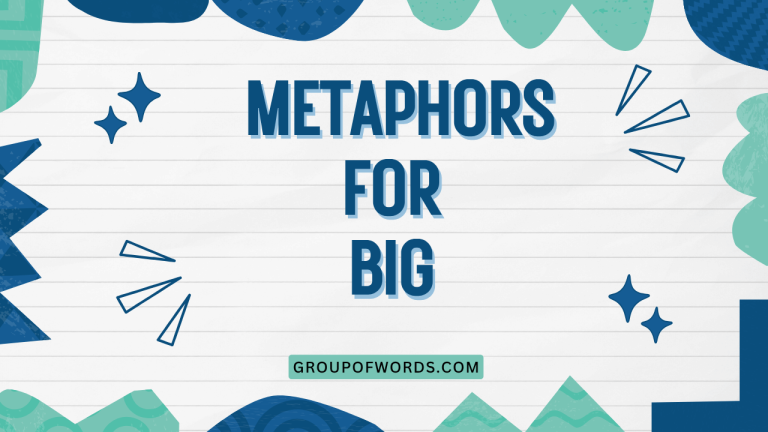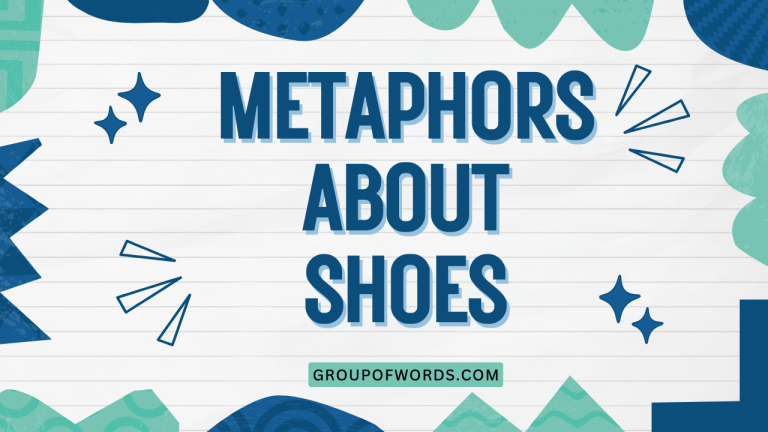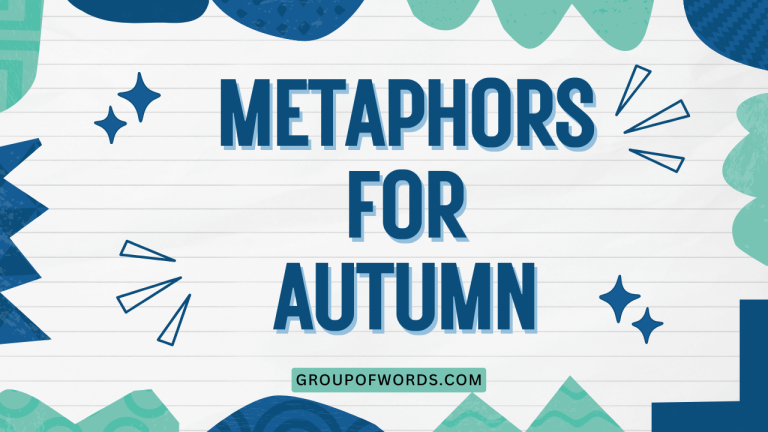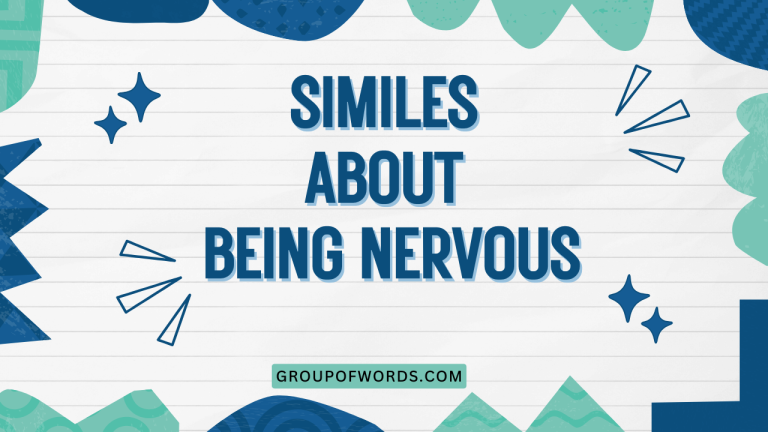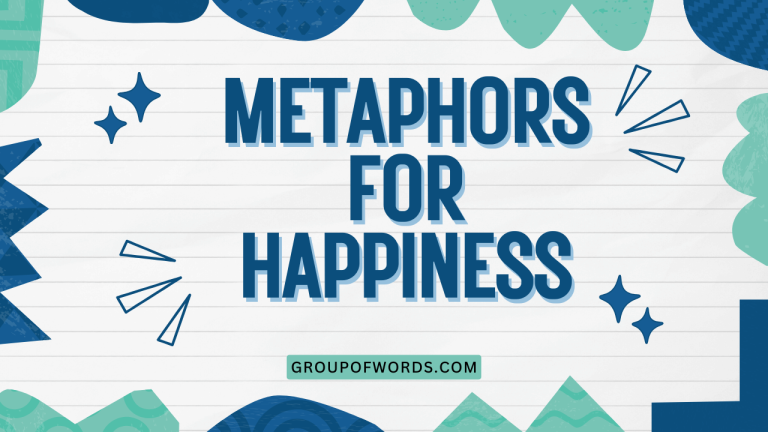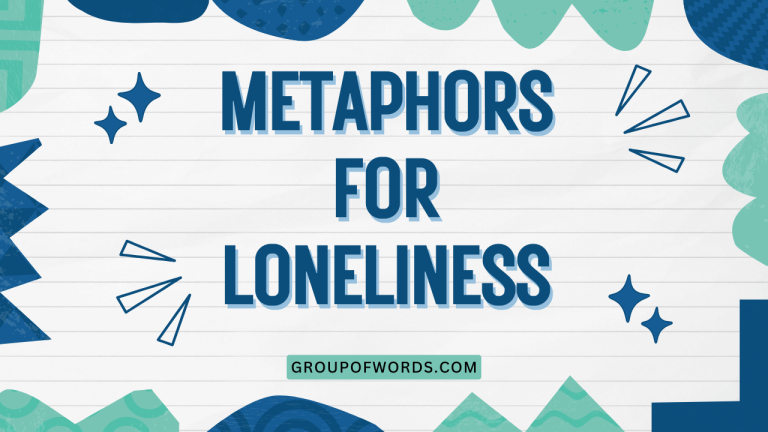Similes About Beauty: Enhancing Descriptions with Comparisons
Understanding similes is crucial for enhancing your descriptive writing and adding depth to your communication. Similes, by comparing one thing to another, allow you to paint vivid pictures with words and evoke stronger emotions in your audience.
This comprehensive guide explores the use of similes specifically related to beauty, providing numerous examples, usage rules, and practice exercises to help you master this essential literary device. This article is designed for English language learners of all levels, from beginners looking to expand their vocabulary to advanced writers aiming to refine their style.
Table of Contents
- Introduction
- Definition of Simile
- Structural Breakdown of Similes
- Types of Beauty Described by Similes
- Examples of Similes About Beauty
- Usage Rules for Similes
- Common Mistakes with Similes
- Practice Exercises
- Advanced Topics: Nuances and Subtleties
- Frequently Asked Questions
- Conclusion
Definition of Simile
A simile is a figure of speech that compares two unlike things using the words “like” or “as.” Its primary function is to create a vivid image or convey a deeper meaning by drawing a parallel between the two subjects. Similes are commonly used in literature, poetry, and everyday conversation to enhance descriptions and make writing more engaging.
They help to illustrate abstract concepts by relating them to something more concrete and familiar. Understanding similes is essential for both comprehending and crafting expressive language.
Similes are especially effective when describing beauty because beauty itself can be subjective and difficult to define concretely. By comparing a person’s beauty to something universally recognized as beautiful—like a flower, a star, or a work of art—a simile can make the description more impactful and relatable.
Structural Breakdown of Similes
The basic structure of a simile consists of three key elements: the subject being described, the word “like” or “as,” and the object to which the subject is being compared. Let’s break this down further:
- Subject: This is the person, place, or thing whose beauty you are describing.
- Comparison Word: This is either “like” or “as,” which explicitly indicates that a comparison is being made.
- Object of Comparison: This is the person, place, or thing to which the subject’s beauty is being likened.
For example, in the simile “Her eyes were like sparkling diamonds,” “her eyes” is the subject, “like” is the comparison word, and “sparkling diamonds” is the object of comparison. The effectiveness of a simile depends on the relevance and clarity of the comparison.
The more apt and evocative the comparison, the more impactful the simile will be.
Similes can also be structured in slightly different ways, such as using phrases like “as beautiful as” or “resembles.” However, the core principle of comparing two unlike things remains the same.
Types of Beauty Described by Similes
Beauty is a multifaceted concept, encompassing various aspects of appearance, character, and nature. Similes can be used to describe different types of beauty, each requiring a unique approach and vocabulary.
Physical Beauty
This refers to the outward appearance of a person, including their facial features, body shape, and overall attractiveness. Similes used to describe physical beauty often focus on comparing the subject to visually appealing objects or natural elements.
Inner Beauty
This encompasses the qualities of a person’s character, such as kindness, compassion, and intelligence. Similes used to describe inner beauty often focus on abstract concepts or positive emotions.
Natural Beauty
This refers to the beauty of the natural world, including landscapes, animals, and celestial phenomena. Similes used to describe natural beauty often focus on vivid imagery and sensory details.
Artistic Beauty
This encompasses the beauty found in works of art, music, literature, and other creative expressions. Similes used to describe artistic beauty often focus on the emotions or ideas evoked by the artwork.
Examples of Similes About Beauty
The following sections provide numerous examples of similes used to describe different types of beauty. Each example is designed to illustrate the principles discussed earlier and inspire you to create your own similes.
Physical Beauty
Here are some examples of similes used to describe physical beauty. Notice how each simile compares a specific aspect of appearance to something else that is considered beautiful.
| Simile | Explanation |
|---|---|
| Her skin was as smooth as silk. | Compares the texture of her skin to the smoothness of silk. |
| His eyes were like pools of liquid gold. | Compares the color and depth of his eyes to pools of gold. |
| Her hair flowed like a waterfall of raven feathers. | Compares the movement and color of her hair to a dark, flowing waterfall. |
| His smile was as bright as the morning sun. | Compares the radiance of his smile to the sun’s brightness. |
| Her voice was like a melody played on a harp. | Compares the sound of her voice to the harmonious tones of a harp. |
| He moved as gracefully as a panther. | Compares his movements to the elegant and fluid motion of a panther. |
| Her cheeks were like roses in bloom. | Compares the color and texture of her cheeks to blooming roses. |
| His hands were as strong as oak. | Compares the strength of his hands to the durability of oak wood. |
| She was as radiant as a supernova. | Compares her overall glow to the intense brightness of a supernova. |
| His gaze was like a laser, intense and unwavering. | Compares the focus of his gaze to the precision of a laser beam. |
| Her figure was like an hourglass, perfectly proportioned. | Compares her body shape to the classic hourglass figure. |
| He carried himself as proudly as a peacock. | Compares his posture and demeanor to the proud display of a peacock. |
| Her eyelashes were as dark as midnight. | Compares the color of her eyelashes to the darkness of midnight. |
| His jawline was as sharp as a knife. | Compares the definition of his jawline to the sharpness of a knife. |
| She was as delicate as a porcelain doll. | Compares her fragility and beauty to a porcelain doll. |
| His skin was as tanned as leather. | Compares the color and texture of his skin to tanned leather. |
| Her lips were as red as rubies. | Compares the color of her lips to the vibrant red of rubies. |
| He was as handsome as a Greek god. | Compares his overall appearance to the idealized beauty of a Greek god. |
| Her eyes shone like sapphires in the sunlight. | Compares the color and sparkle of her eyes to sapphires. |
| His hair was as silver as moonlight. | Compares the color of his hair to the soft glow of moonlight. |
Inner Beauty
The following table illustrates similes that capture inner beauty, focusing on character traits and emotional qualities. These comparisons often invoke feelings and abstract concepts.
| Simile | Explanation |
|---|---|
| Her kindness was like a warm blanket on a cold day. | Compares her kindness to the comforting feeling of a warm blanket. |
| His wisdom was as deep as the ocean. | Compares the depth of his wisdom to the vastness of the ocean. |
| Her compassion flowed like a river. | Compares the abundance of her compassion to a flowing river. |
| His honesty was as clear as crystal. | Compares the transparency of his honesty to the clarity of crystal. |
| Her spirit was like a flame, always burning bright. | Compares her resilient spirit to a constantly burning flame. |
| His generosity was as boundless as the sky. | Compares the limitlessness of his generosity to the vastness of the sky. |
| Her love was like a gentle rain, nourishing everything it touched. | Compares her nurturing love to the life-giving properties of rain. |
| His patience was as solid as a rock. | Compares the steadfastness of his patience to the strength of a rock. |
| Her laughter was like music to his ears. | Compares the pleasant sound of her laughter to the enjoyment of music. |
| His courage was as fierce as a lion’s roar. | Compares the strength of his courage to the powerful roar of a lion. |
| Her empathy was like a bridge, connecting her to others’ pain. | Compares her ability to understand others’ feelings to a bridge that connects. |
| His integrity was as unwavering as a compass pointing north. | Compares his moral compass to a literal compass. |
| Her forgiveness was as vast as the open plains. | Compares her capacity to forgive to the endless plains. |
| His humility shone like a quiet light in the darkness. | Compares his lack of arrogance to a calming light. |
| Her resilience was like a tree bending in the wind but never breaking. | Compares her ability to recover to a tree that withstands natural forces. |
| His wisdom was as comforting as a familiar lullaby. | Compares his insights to a soothing song. |
| Her grace was as natural as a bird in flight. | Compares her elegance to a bird’s effortless movement. |
| His resolve was as unbreakable as a diamond. | Compares his determination to the strength of a diamond. |
| Her spirit soared like an eagle, free and unburdened. | Compares her freedom to an eagle’s flight. |
| His heart was as gold as a king’s treasure. | Compares his kind heart to valuable treasure. |
Natural Beauty
Here are examples of similes describing natural beauty. These often use sensory details to evoke the scene.
| Simile | Explanation |
|---|---|
| The sunset was like a painting, with hues of orange and pink. | Compares the vibrant colors of the sunset to a work of art. |
| The stars were like diamonds scattered across the night sky. | Compares the brilliance of the stars to the sparkle of diamonds. |
| The ocean was as calm as a sleeping giant. | Compares the tranquility of the ocean to a sleeping giant. |
| The forest was like a cathedral, with towering trees and dappled light. | Compares the grandeur of the forest to the majestic architecture of a cathedral. |
| The mountains stood like silent sentinels, guarding the valley below. | Compares the imposing presence of the mountains to watchful sentinels. |
| The river flowed like liquid silver, winding through the landscape. | Compares the shimmering surface of the river to liquid silver. |
| The meadow was like a carpet of wildflowers, bursting with color. | Compares the vibrant display of wildflowers to a colorful carpet. |
| The waterfall cascaded like a curtain of white silk. | Compares the flowing water of the waterfall to a soft, white curtain. |
| The moon was like a pearl in the inky sky. | Compares the luminosity of the moon to the luster of a pearl. |
| The clouds were like cotton candy, floating in the blue sky. | Compares the fluffy texture of the clouds to cotton candy. |
| The desert stretched out like an endless sea of sand. | Compares the vastness of the desert to the expanse of the ocean. |
| The aurora borealis danced like ribbons of light in the sky. | Compares the movement of the aurora to dancing ribbons. |
| The snow fell like feathers, softly blanketing the ground. | Compares the gentle descent of the snow to the lightness of feathers. |
| The rainbow arched like a bridge across the sky. | Compares the shape of the rainbow to a bridge. |
| The volcano erupted like a fiery dragon, spewing lava and ash. | Compares the powerful eruption to a dragon. |
| The geyser erupted like a fountain, shooting water high into the air. | Compares the eruption to a fountain. |
| The canyon was as deep as a wound in the earth. | Compares the depth of the canyon to a wound. |
| The cave was as dark as the inside of a coffin. | Compares the darkness to a coffin. |
| The lake was as still as glass. | Compares the calmness of the lake to glass. |
| The sun was as hot as fire. | Compares the heat of the sun to fire. |
Artistic Beauty
The following similes describe artistic beauty, focusing on the emotional impact and aesthetic qualities of various art forms.
| Simile | Explanation |
|---|---|
| The music was like a balm to his soul. | Compares the soothing effect of the music to a healing balm. |
| The painting was as vibrant as a dream. | Compares the vivid colors of the painting to the imagery of a dream. |
| The poem flowed like a river of emotions. | Compares the emotional depth of the poem to a flowing river. |
| The dance was as graceful as a swan gliding on water. | Compares the elegance of the dance to the smooth movements of a swan. |
| The sculpture stood like a testament to human creativity. | Compares the artistic significance of the sculpture to a lasting testament. |
| The novel was like a journey to another world. | Compares the immersive experience of reading the novel to traveling to another world. |
| The play was as captivating as a magician’s spell. | Compares the engaging nature of the play to the enthralling power of a magic spell. |
| The film was like a window into another person’s life. | Compares the insight gained from watching the film to looking through a window. |
| The architecture was as imposing as a mountain range. | Compares the grandeur of the architecture to the scale of a mountain range. |
| The photograph was like a memory frozen in time. | Compares the ability of the photograph to capture a moment to freezing time. |
| The song was as haunting as a melody from the past. | Compares the emotional impact of the song to a lingering memory. |
| The artwork was as thought-provoking as a philosophical debate. | Compares the intellectual stimulation to a philosophical discussion. |
| The performance was as electrifying as a lightning storm. | Compares the energy of the performance to a storm. |
| The design was as sleek as a sports car. | Compares the elegance to a car. |
| The story was as comforting as a bedtime tale. | Compares the soothing nature to a tale. |
| The comedy was as light as a feather. | Compares the humor to a feather. |
| The drama was as intense as a volcano. | Compares the tension to a volcano. |
| The documentary was as informative as an encyclopedia. | Compares the educational value to an encyclopedia. |
| The art installation was as innovative as a spaceship. | Compares the novelty to a spaceship. |
| The ballet was as precise as clockwork. | Compares the accuracy to clockwork. |
Usage Rules for Similes
Using similes effectively requires adherence to certain rules and guidelines. Here’s a breakdown of the key considerations:
- Clarity: The comparison should be clear and easily understood by the audience. Avoid obscure or overly complex comparisons that may confuse the reader.
- Relevance: The object of comparison should have a logical connection to the subject being described. The more relevant the comparison, the more impactful the simile will be.
- Originality: While common similes can be effective, strive for originality to make your writing more engaging and memorable. Avoid clichés and try to find fresh, creative comparisons.
- Context: Consider the context in which the simile is being used. The appropriateness of a simile can depend on the tone, style, and audience of the writing.
- Avoid Mixed Metaphors: Do not mix metaphors or similes within the same sentence or paragraph. This can create confusion and weaken the overall effect.
For example, instead of saying “Her beauty was like a rose blooming in a concrete jungle,” which is a mixed metaphor, choose one image and stick with it. A better simile would be “Her beauty was like a rose blooming in a garden.”
Common Mistakes with Similes
Several common mistakes can undermine the effectiveness of similes. Being aware of these pitfalls can help you avoid them in your own writing.
| Mistake | Incorrect Example | Correct Example | Explanation |
|---|---|---|---|
| Using Clichés: Relying on overused similes that have lost their impact. | Her eyes were like the stars. | Her eyes shone like distant galaxies. | The corrected simile offers a fresher, more vivid comparison. |
| Creating Mixed Metaphors: Combining unrelated images in a single comparison. | His courage was like a lion, but also a gentle stream. | His courage was like a lion’s roar. | The corrected simile maintains a consistent image. |
| Making Unclear Comparisons: Using comparisons that are difficult to understand or interpret. | Her beauty was like a quantum entanglement. | Her beauty was like a magnetic force, drawing everyone near. | The corrected simile is more accessible and relatable. |
| Overusing Similes: Using too many similes in a short space, which can make the writing feel cluttered. | Her dress was like silk, her hair like a waterfall, her eyes like jewels. | Her dress flowed like silk, complementing the jewel-like sparkle in her eyes. | The corrected version uses fewer similes for a more streamlined effect. |
| Confusing Similes with Metaphors: Mistaking a direct comparison (metaphor) for an indirect one (simile). | Her smile was a sun. (Intended as a simile) | Her smile was like the sun, warming everyone around her. | The corrected version uses “like” to establish the comparison. |
Practice Exercises
Test your understanding of similes with the following exercises. For each question, create a simile to complete the sentence.
Answers are provided below.
| Question | Answer |
|---|---|
| 1. Her laughter was __________. | Her laughter was like a bubbling brook, cheerful and refreshing. |
| 2. His anger flared __________. | His anger flared like a sudden wildfire, consuming everything in its path. |
| 3. The old house stood __________. | The old house stood like a forgotten sentinel, weathered and worn by time. |
| 4. The music filled the room __________. | The music filled the room like a warm embrace, comforting and enveloping. |
| 5. The athlete ran __________. | The athlete ran like a cheetah, swift and unstoppable. |
| 6. The night sky was __________. | The night sky was like a velvet curtain, adorned with sparkling stars. |
| 7. The city streets were __________. | The city streets were like a maze, twisting and turning in every direction. |
| 8. The artist’s brushstrokes were __________. | The artist’s brushstrokes were like whispers, delicate and precise. |
| 9. The mountain peak was __________. | The mountain peak was like a crown, towering over the surrounding landscape. |
| 10. The child’s imagination was __________. | The child’s imagination was like a boundless playground, filled with endless possibilities. |
More Practice Questions:
| Question | Answer |
|---|---|
| 11. The detective’s mind worked __________. | The detective’s mind worked like a steel trap, never missing a detail. |
| 12. The politician spoke __________. | The politician spoke like a seasoned actor, captivating the audience. |
| 13. The ocean roared __________. | The ocean roared like a thousand lions, powerful and untamed. |
| 14. The garden flourished __________. | The garden flourished like a paradise, vibrant and full of life. |
| 15. The student learned __________. | The student learned like a sponge, absorbing knowledge rapidly. |
| 16. The clock ticked __________. | The clock ticked like a heartbeat, marking the passage of time. |
| 17. The river meandered __________. | The river meandered like a snake, winding through the valley. |
| 18. The fire crackled __________. | The fire crackled like whispered secrets, warm and inviting. |
| 19. The building loomed __________. | The building loomed like a giant, casting a long shadow. |
| 20. The dessert tasted __________. | The dessert tasted like heaven, sweet and decadent. |
Advanced Topics: Nuances and Subtleties
For advanced learners, exploring the nuances and subtleties of similes can further enhance their writing skills. This includes understanding how to use similes to create specific moods, evoke complex emotions, and add layers of meaning to their work.
One advanced technique is to use similes that subvert expectations. For example, instead of saying “Her smile was like sunshine,” you could say “Her smile was like a crack of dawn after a long, dark night,” which adds a sense of relief and hope.
Another technique is to use similes that incorporate sensory details beyond just sight. For example, “His voice was like sandpaper, grating on her nerves” uses the sense of touch to create a vivid and unpleasant image.
Experimenting with different types of comparisons and exploring the emotional impact of various similes can help you develop a more sophisticated and nuanced writing style.
Frequently Asked Questions
- What is the difference between a simile and a metaphor?
A simile uses “like” or “as” to compare two things, while a metaphor directly states that one thing *is* another. For example, “Her eyes are like stars” (simile) versus “Her eyes are stars” (metaphor).
- How can I make my similes more original?
Avoid clichés by thinking outside the box. Consider unique qualities of the subject and find less obvious comparisons. Brainstorm a list of related ideas and choose the most evocative.
- Is it okay to use similes in formal writing?
Yes, but use them sparingly and ensure they are appropriate for the tone and audience. Overuse can make writing seem less serious, while well-placed similes can enhance clarity and impact.
- How do I know if a simile is effective?
An effective simile creates a clear, vivid image in the reader’s mind and enhances their understanding or appreciation of the subject. If the comparison feels forced or confusing, it’s not effective.
- Can a simile be too complex?
Yes. If the comparison is too obscure or requires specialized knowledge, it may confuse readers. Aim for clarity and relatability.
- How many similes should I use in a piece of writing?
There’s no fixed rule, but avoid overuse. A few well-chosen similes can be more effective than many that feel forced or repetitive. Focus on quality over quantity.
- What if I can’t think of a good simile?
Don’t force it. Sometimes a direct description is better than a weak simile. Try focusing on specific details and sensory experiences related to the subject, and a comparison may emerge naturally.
- Are similes only used to describe beauty?
No, similes can be used to describe anything – emotions, actions, objects, ideas, etc. They are a versatile tool for enhancing any type of descriptive writing.
Conclusion
Mastering the art of using similes is a valuable skill for any writer or communicator. By understanding the structure, usage rules, and common pitfalls of similes, you can enhance your descriptions, evoke stronger emotions, and make your writing more engaging.
Remember to strive for clarity, relevance, and originality in your comparisons, and to consider the context in which the simile is being used. With practice and attention to detail, you can use similes to paint vivid pictures with words and bring your writing to life.
Continue to explore different types of similes, experiment with various comparisons, and analyze the work of other writers to further refine your skills. The more you practice, the more natural and effective your use of similes will become.
Happy writing!
